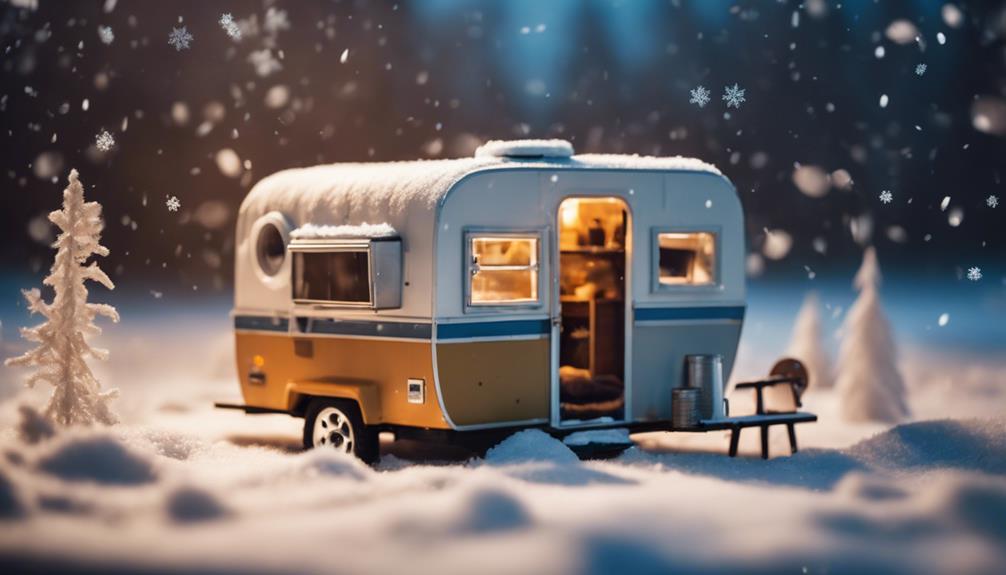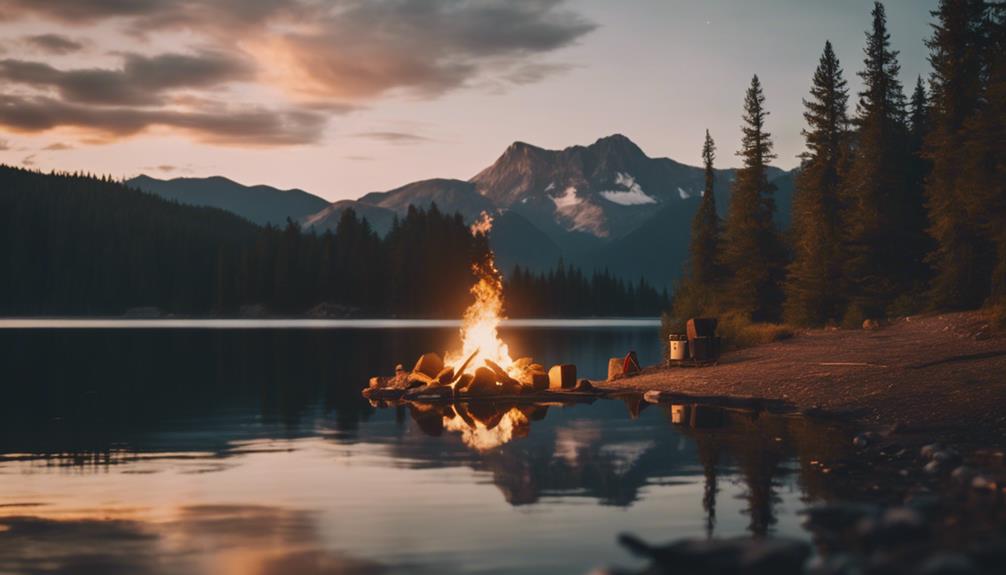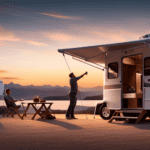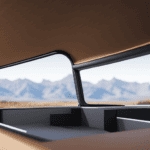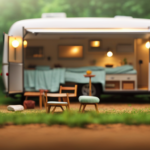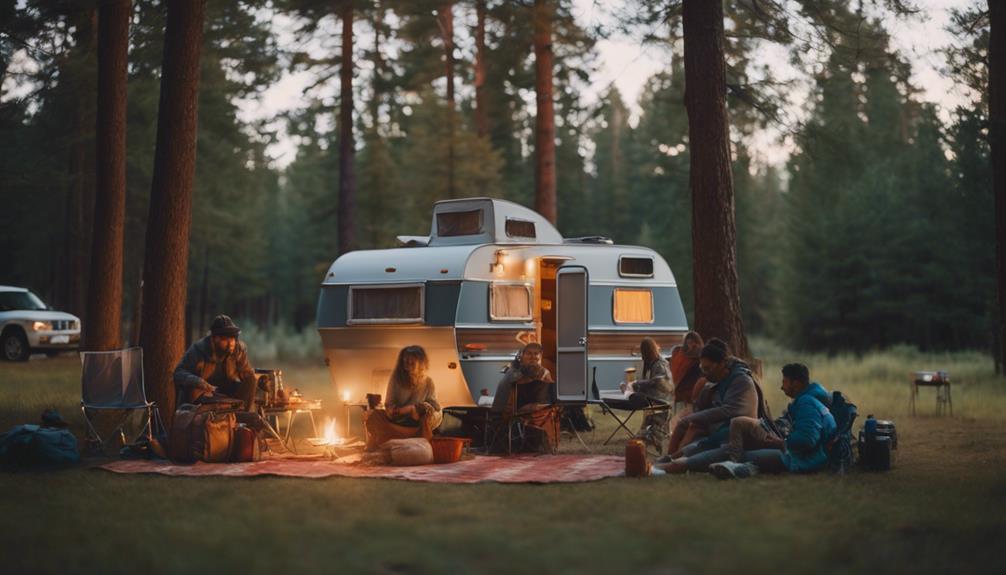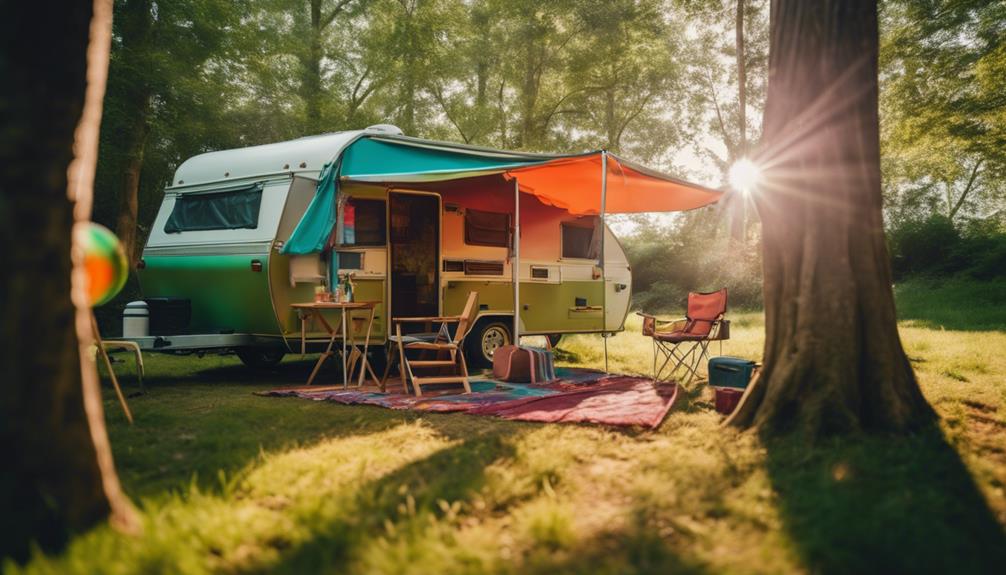To convert your pop-up camper into a fish house, start by verifying the frame can handle any new materials. Retain the original roof and side panels for stability. Use insulation like foam boards for superior thermal efficiency and guarantee proper ventilation for your heating system. Reinforce the structure with plywood and consider adding windows for natural light. Source affordable materials from local shops or online marketplaces. Don't forget to monitor weather conditions to time your renovations. With some creativity and planning, you can create a cozy, year-round fishing getaway that's uniquely yours. There's much more to explore in this transformation process!
Key Takeaways
- Insulate the camper using foam boards for superior thermal efficiency, ensuring comfort during cold weather fishing trips.
- Maintain proper ventilation to safely operate a gas heater, preventing moisture buildup and ensuring a safe environment.
- Reinforce the structure by adding framing around existing components and installing four support posts for stability.
- Incorporate double-pane windows for reduced heat loss and improved natural light, enhancing the overall ambiance.
Conversion Considerations
When converting a pop-up camper into a fish house, you need to take into account the weight capacity of the frame to guarantee it can safely support any new materials or features. Before diving into your project, assess the existing structure to avoid overloading it. Retaining the original roof and side panels can help maintain stability during your conversion.
Insulation is another significant conversion consideration. You'll want to keep moisture levels in check, so opt for insulation materials like pink, blue, or white insulation, steering clear of fiberglass. Proper insulation guarantees a comfortable environment while fishing in colder weather.
Don't overlook ventilation, especially if you plan to use gas heaters for warmth. Replacing the canvas with siding means you'll need to create adequate airflow to prevent harmful gas buildup. Installing vents will help circulate air, keeping your space safe and cozy.
Structural Modifications
To enhance the durability and safety of your pop-up camper fish house, focus on essential structural modifications that reinforce its integrity. Start by retaining the original roof and side panels; this will enhance stability during your conversion. Consider adding framing around existing components, as it simplifies construction and maintains structural integrity.
Next, pay attention to your doors and locking mechanisms. Reinforcing these features is vital for improving security in your converted fish house. Additionally, think about your windows; using thick plexiglass can prevent break-ins while allowing visibility and maintaining insulation.
Here's a quick overview of key modifications:
| Modification Type | Benefits |
|---|---|
| Retaining Components | Enhances stability during conversion |
| Framing | Simplifies construction and maintains integrity |
| Reinforcing Doors | Improves security and functionality |
Incorporate plywood and rubber roofing options to greatly increase durability and weather resistance. By focusing on these structural modifications, you'll create a safe and sturdy fish house that's ready for year-round fun.
Insulation and Heating
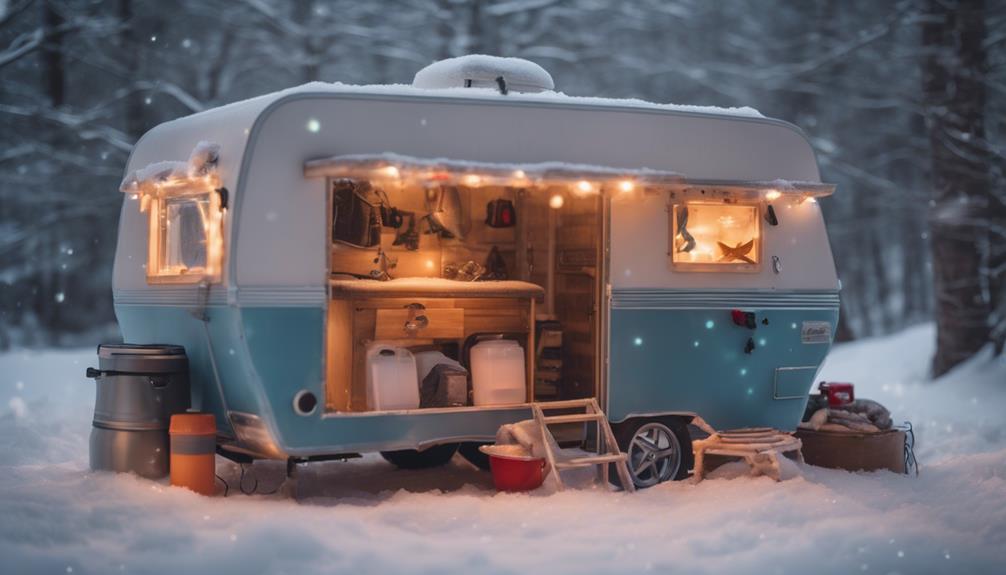
When converting your pop-up camper into a fish house, you'll want to focus on efficient heating and insulation to keep things cozy.
Consider your heating system options, like existing gas heaters, while also ensuring proper ventilation for safety.
Additionally, comparing insulation materials can help you choose the best solution to maintain warmth and prevent moisture issues.
Heating System Options
Choosing the right insulation and heating options can make your converted fish house comfortable and efficient during the cold months. Start with the existing heating system in your pop-up camper, which is usually sufficient for your needs.
However, don't underestimate the importance of proper ventilation, especially if you're using a gas heater. This guarantees safety while keeping the air fresh.
For insulation, consider using pink, blue, or white foam boards. These materials are effective at managing moisture levels, unlike fiberglass, which you should avoid.
Additionally, installing double-pane windows will enhance thermal efficiency, helping to retain heat while providing good visibility outside.
Insulation Materials Comparison
Comparing insulation materials for your pop-up camper reveals that foam boards offer superior moisture management and thermal efficiency compared to fiberglass.
While fiberglass may be a common choice, it tends to absorb moisture, leading to potential mold growth and insulation degradation. Foam boards, like pink, blue, and white varieties, create a solid barrier that resists moisture, ensuring a drier and more comfortable environment.
Using foam boards also enhances your camper's energy efficiency. With effective insulation, you'll maintain warmth during cold fishing trips, allowing your heater to work less and saving on energy costs.
Plus, consider installing double-pane windows, which further improve thermal efficiency by reducing heat loss.
Ventilation Safety Measures
Guaranteeing proper ventilation in your converted pop-up camper is vital for safely using gas heaters and preventing harmful gas buildup. When you're heating your fish house, make sure to create a well-ventilated design that includes openings or vents. This allows fresh air to circulate, keeping the environment safe and comfortable.
Insulation plays a key role in temperature control, so consider using foam insulation—pink, blue, or white—while avoiding fiberglass. This will help you manage moisture levels and maintain ideal temperatures inside. Installing double-pane windows can further enhance thermal efficiency, reducing heat loss and preventing condensation.
If your camper has an existing heating system, it can effectively warm the space, but you still need adequate ventilation to guarantee safety. Gas heaters require proper airflow to function correctly, so don't overlook this vital aspect.
Resource Acquisition
Often, you'll find that local sign companies have low-cost plywood available, which is perfect for building walls and insulation during your fish house conversion. This plywood not only saves you money but also provides sturdy support for your new space.
Consider reaching out to contractors who might be open to bartering materials, like rubber roofing, in exchange for services such as a fishing trip. This can help you keep costs low while still acquiring essential materials.
Online marketplaces and community forums can be treasure troves for sourcing windows and other items needed for ventilation and light. You can often find gently used materials at a fraction of the cost. Utilizing recycled materials in your project is another great way to cut expenses while promoting sustainability.
Don't underestimate the value of engaging with community members. They can offer invaluable insights and referrals for specific materials you might need, creating a collaborative environment that benefits everyone involved.
Community Engagement
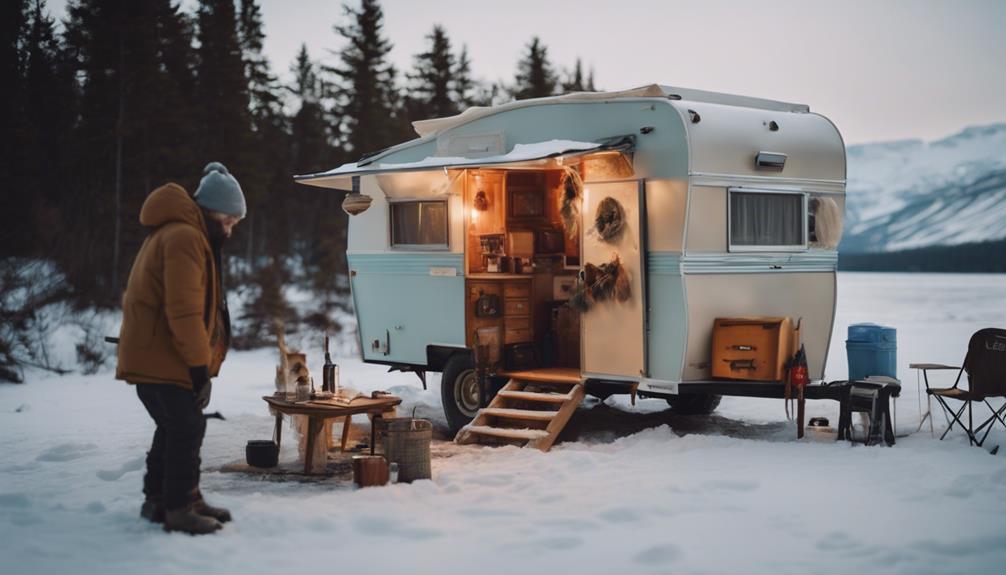
Building on the importance of resource acquisition, engaging with community members can greatly enhance your experience and knowledge while converting your pop-up camper into a fish house. Online forums and social media groups are treasure troves for DIY enthusiasts like you. By participating actively, you can share your journey and tap into a wealth of personal experiences and valuable advice.
Community members often discuss construction techniques, materials, and safety considerations, building a rich knowledge base that you can draw from. This resource sharing is essential for successful conversions, as many converters seek plans and ideas from others who've tackled similar projects.
As you exchange tips and tricks, you'll find motivation and encouragement from fellow DIY enthusiasts. This supportive environment fosters collaboration, ensuring that everyone feels empowered to create functional and safe designs for their camper renovations.
Weather Conditions
Weather conditions can greatly influence your camper conversion timeline, so it's smart to keep an eye on local forecasts. For instance, when Maryland experienced mild weather in January 2020, with temperatures reaching the mid to upper 60s, many enthusiasts took advantage of the unexpected warmth for outdoor activities. Such conditions are atypical for winter but can considerably enhance your ability to work on your camper.
When you encounter mild winter weather, you can extend your work periods without the constraints of harsh cold. This flexibility can help you meet your project timelines more efficiently, allowing you to focus on your camper's renovation. Conversely, if you face colder temperatures, it could limit your progress and push your project timeline back.
To optimize your conversion process, monitor local weather trends regularly. This way, you can seize opportunities for outdoor work when the conditions are favorable. Being proactive about the weather will guarantee your camper transformation into a fish house becomes a seamless and enjoyable experience, no matter the season.
Construction Process
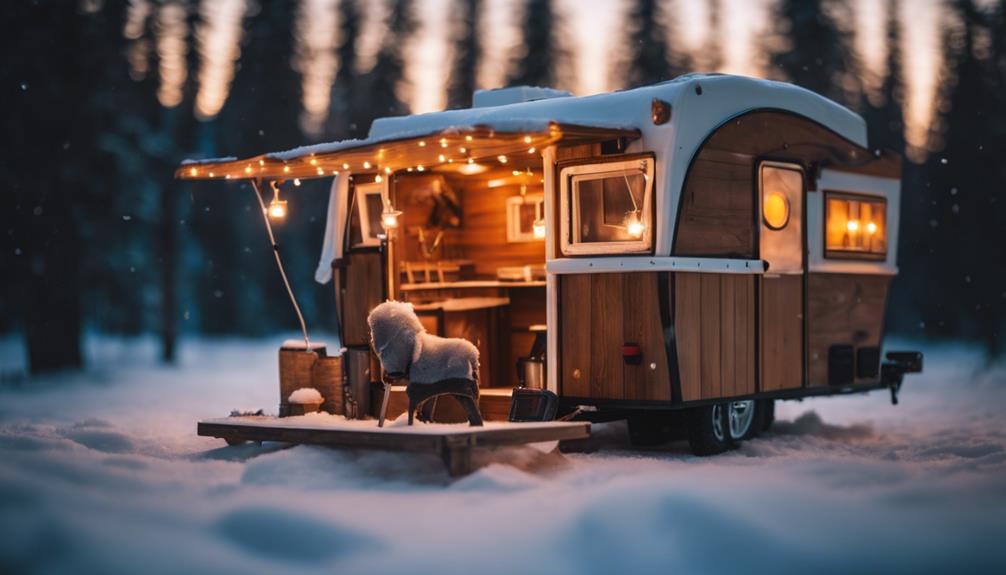
To kick off the construction process, start by removing the existing supports and roof from your pop-up camper to prepare for renovations. Make sure to evaluate the frame's weight capacity before adding new materials.
Once you've stripped it down, install four posts to provide structural support. Cut notches into the wood for a secure fit, ensuring stability during assembly.
Next, use bolts to secure components at the base of the camper. It's also a good idea to permanently attach the top 2x4s with screws for enhanced stability. To improve the overall structural integrity, add cross pieces to the frame. This will maintain strength while simplifying the construction process.
Before diving into assembly, create multiple design sketches, including both CAD and hand-drawn options. Finalize the camper's shape, opting for a box shape to keep things simple and practical.
This streamlined design will make your fish house functional and efficient, allowing for year-round use. With the structural support in place and your design ready, you're well on your way to transforming that pop-up camper into a fantastic fish house!
Future Plans and Features
With the structural framework established, you can now focus on the future plans and features that will enhance the functionality and comfort of your fish house.
One key addition is the air conditioning unit, which will keep the interior cool during warmer months, making your fishing trips more enjoyable.
To improve ventilation and natural light, you'll want to install windows sourced from online marketplaces. These won't only brighten up the space but also provide fresh air circulation, which is essential for comfort.
Additionally, incorporating a drip edge in the siding will bolster weather resistance, protecting your fish house from moisture accumulation and ensuring durability.
Don't forget about stability and security; a support piece for door attachment is planned to secure the entry, giving you peace of mind while you're out fishing.
As you continue sketches and planning, consider layout adjustments and other features that can optimize space and usability.
These thoughtful enhancements will make your fish house a great retreat, letting you enjoy year-round fun while maximizing comfort and functionality.
Frequently Asked Questions
Can You Live Out of a Pop up Camper?
Yes, you can live out of a pop-up camper. With some modifications for insulation and heating, you'll create a comfortable space for year-round living, making the most of your outdoor adventures and experiences.
What Is a Fish House Camper?
A fish house camper's a mobile shelter designed for ice fishing. It's insulated, heated, and ventilated, providing comfort while you fish. Plus, it often includes benches, fish holes, and gear storage for convenience.
Can the Same Renovation Techniques be Used to Convert a Pop-Up Camper into a Fish House?
Yes, the renovate popup camper transformation can be utilized to convert a pop-up camper into a fish house. By making adjustments to the interior and adding the necessary equipment for ice fishing, a pop-up camper can easily be transformed into a comfortable and functional fish house.
Conclusion
So, go ahead and transform that pop-up camper into a fish house—it's not like you need it for actual camping, right?
Who wouldn't want to spend their weekends huddled over a hole in the ice, dreaming of summer?
Just remember, if the fish aren't biting, at least you can blame it on the insulation!
With a bit of creativity and a dash of madness, your quirky fish palace will have you reeling in more than just fish tales.

